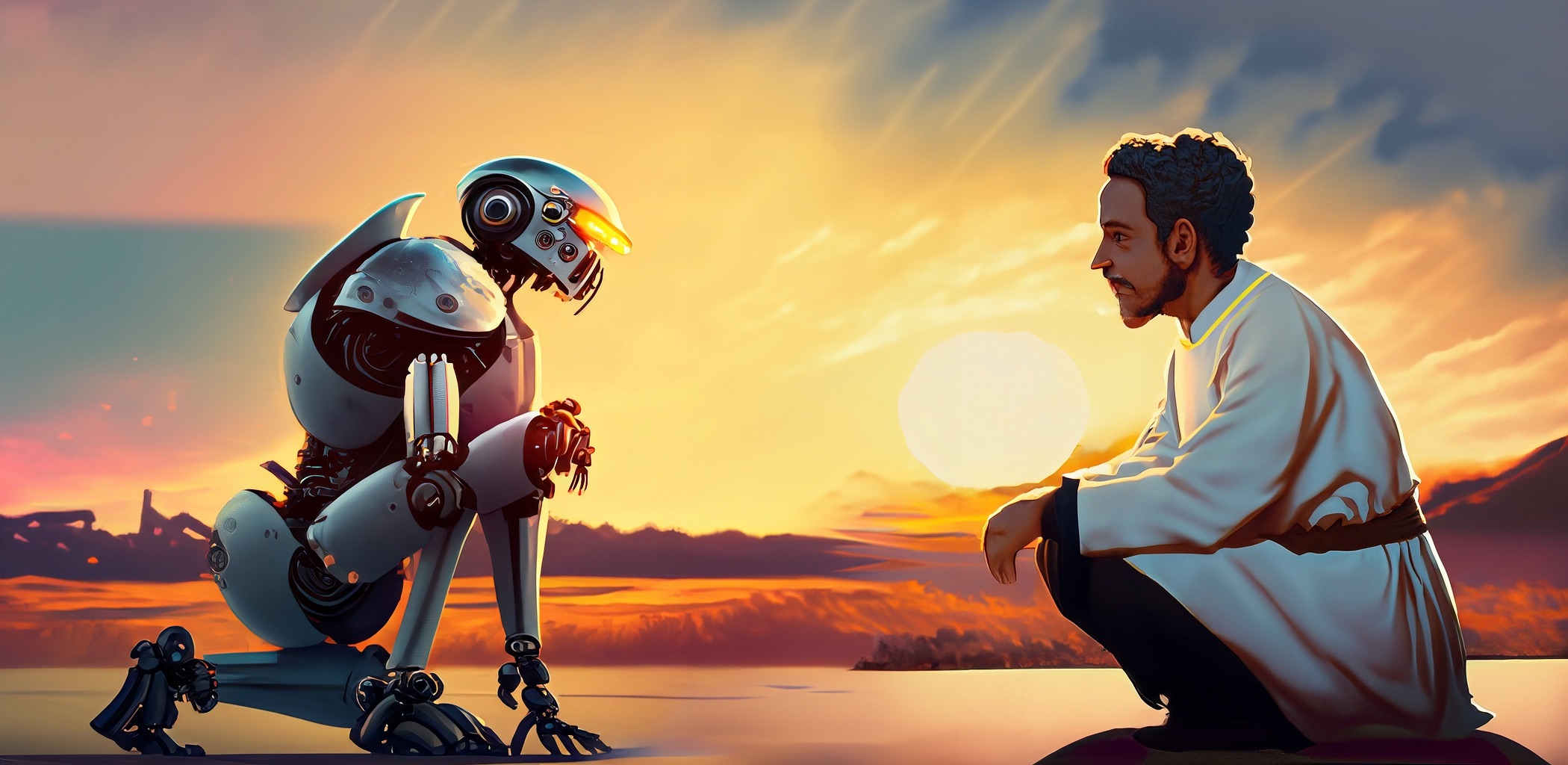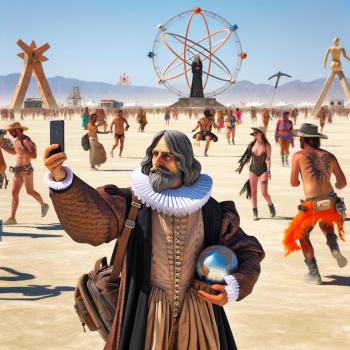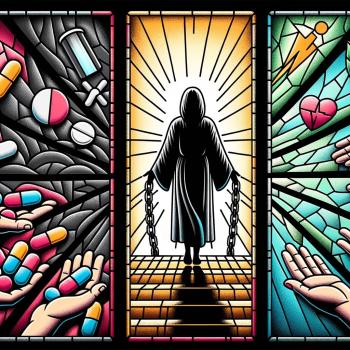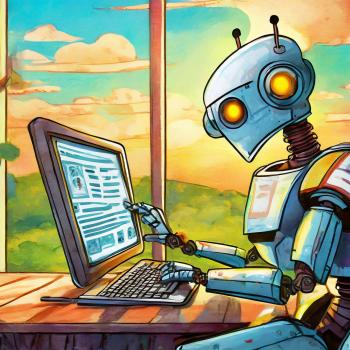
Should you prefer an audio version of this post click here.
The first post of a new column is either momentous or trivial.
Trivial because very few people will see it. A new column has no pre-existing audience, after all. Moreover, those people who discover the column in the future are unlikely to go back and read all of the previous posts. (If that is precisely how you arrived here, you’re the exception. Please leave a comment.)
Momentous because the first post is the cornerstone of the whole edifice. It sets the tone for everything to come and serves as a thesis statement that will lurk in the background of hundreds of future posts.
Upon examination, there is a similar dichotomy in the relationship between technology and religion…
In a way, the influence of technology on religion is trivial — one has very little to do with the other. They are, as evolutionary biologist Stephen Jay Gould said, non-overlapping magisteria. One has only to look at the dearth of columnists in the Technology and Religion section of this very website to see a stark illustration of this separation.
Sure, cars made it easier to attend church and Zoom made it easier still. Microphones made mega-churches possible, and social media allows preachers to proselytize far and wide.
But what does any of this have to do with spirituality or faith? Certainly our faith isn’t made stronger by our car and we don’t pray using Zoom. Social media may create connections, but it can’t connect us to God. He doesn’t have a Twitter account (or if He does, He hasn’t paid for His blue checkmark.)
On the other hand, occasionally technology completely transforms religion. The prime example would be the printing press and the Reformation.
On a more subtle level, if we ask what technology has to do with life, and what life has to do with spirituality and faith, then the connection between the two is also obvious. However, saying that it’s obvious does not mean that it’s straightforward or transparent.
It’s one thing to say that, given the impact technology has on our lives, it must have an impact on the practice of our faith. It’s quite another thing to say what that impact is. Sometimes, as with the printing press it’s obvious, but most of the time it’s not.
This is the mission of Dispatches from the End of the World — its raison d’être: identifying the multitudinous impacts of technology on our faith and religion. As you might gather from the title I think these impacts are large, underappreciated, and potentially apocalyptic. I am certainly not the first to undertake this task. Many others have gone before me. Their opinions form a continuum, with extreme technological caution on one end and extreme optimism on the other.
On the cautious end we have the Amish who are better known for the limited use of technology than they are for their pacifism. At one time, their careful consideration of each new technology, and their slow pace of technological adoption appeared quaint. More and more it appears prescient.
If the caution of the Amish seems unpalatable or unworkable, you can go to the other end of the continuum and assume that future technology is sanctified. Perhaps you’ve heard of transhumanism? Well there are Christian Transhumanists, and within my own faith there’s the Mormon Transhumanist Association (MTA), who believe that:
…scientific knowledge and technological power are among the means ordained of God to enable…exaltation, including realization of diverse prophetic visions of transfiguration, immortality, resurrection, renewal of this world, and the discovery and creation of worlds without end.
One has to admire their unflinching combination of religious doctrines with still-to-be-invented technology.
As few of my readers, myself included, are willing to entirely embrace the ideology of either the Amish or the MTA, some middle course must be plotted. We have been put in the position of separating the positive technological wheat from the destructive technological tares — of living with technology but not for technology.
This is a difficult task. Things are changing fast, and in ways which are impossible to predict. At one point technology could be counted on to make things cheaper, faster, and more efficient. Lately technology can be counted on to make things stranger, angrier, and lonelier. We are less healthy physically, emotionally, but most of all spiritually. As I said, the path of the Amish seems prescient, and if that’s your choice, godspeed. But for those who choose to embrace the 21st century, perhaps only because so many of those they love are here as well, what is to be done?
It is difficult to act in the absence of knowledge. That is what this column will provide. We will explore the dangers and blessings of technology; its subtle impacts and massive revolutions. The ways technology has pulled people away from faith and religion, and the holes it has created thereby. The amazing world it has created, but also the danger it has wrought. The salvation it promises, the apocalypses it may deliver.












